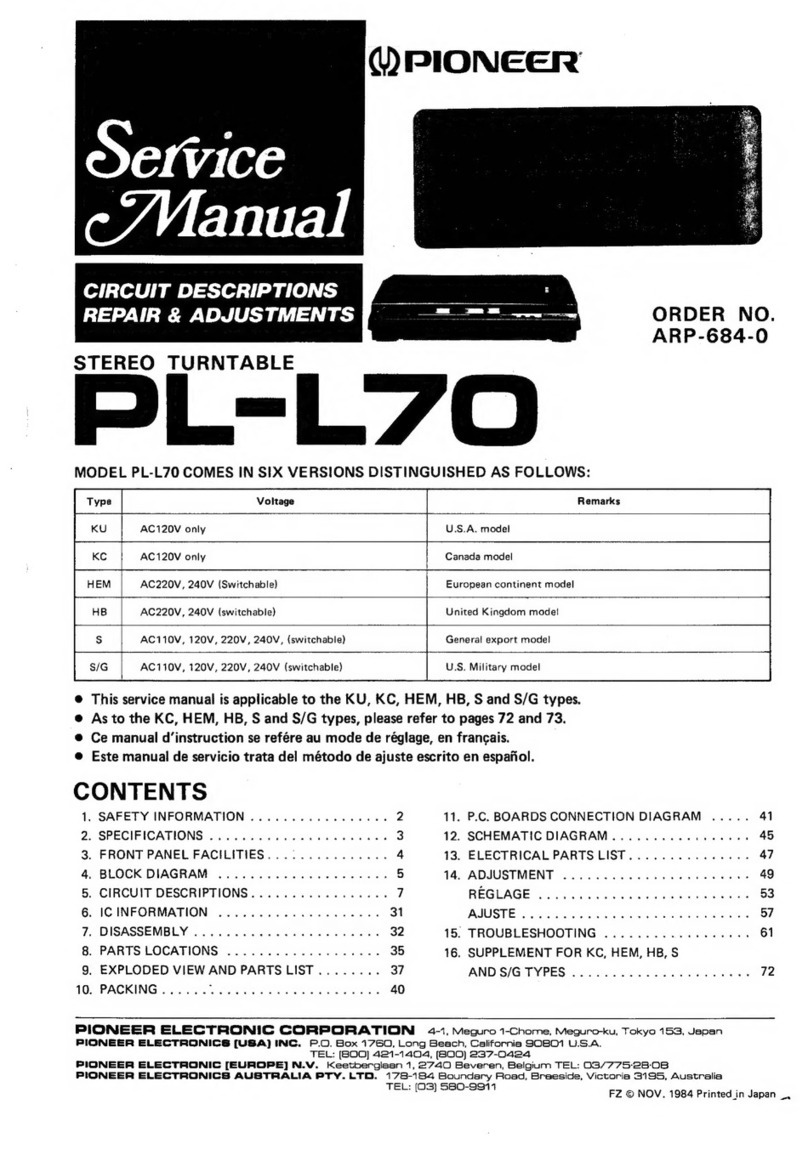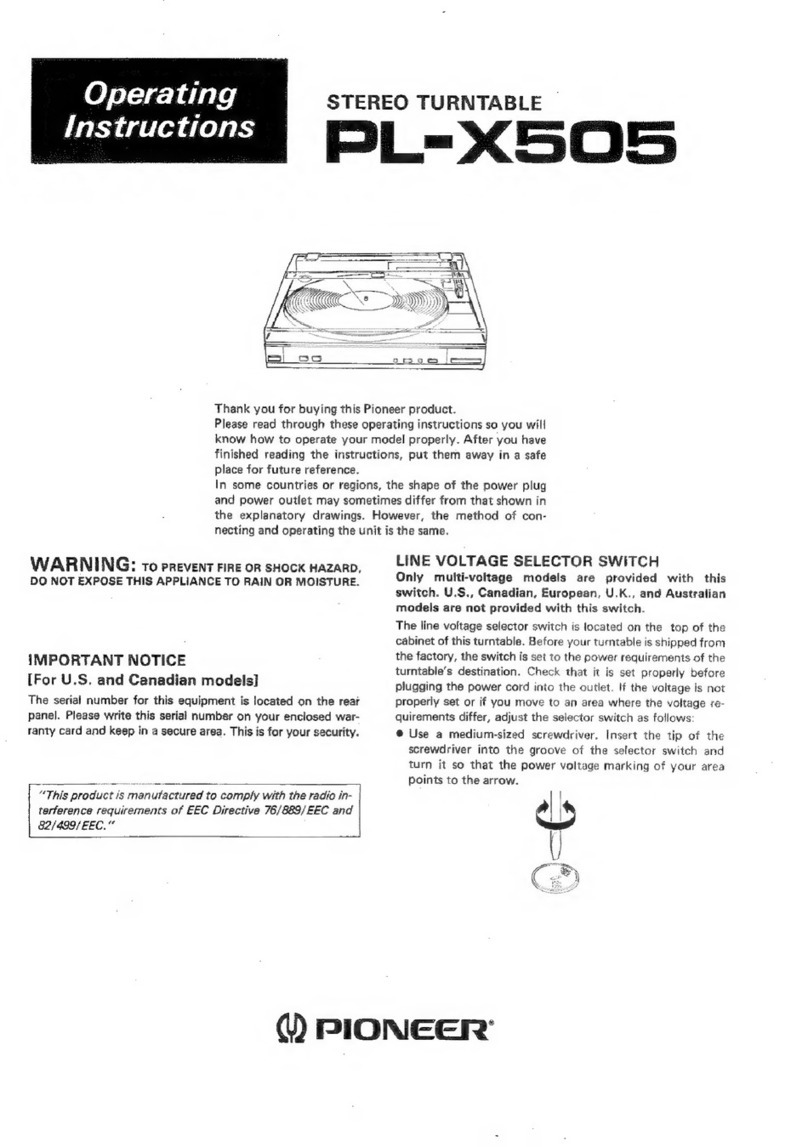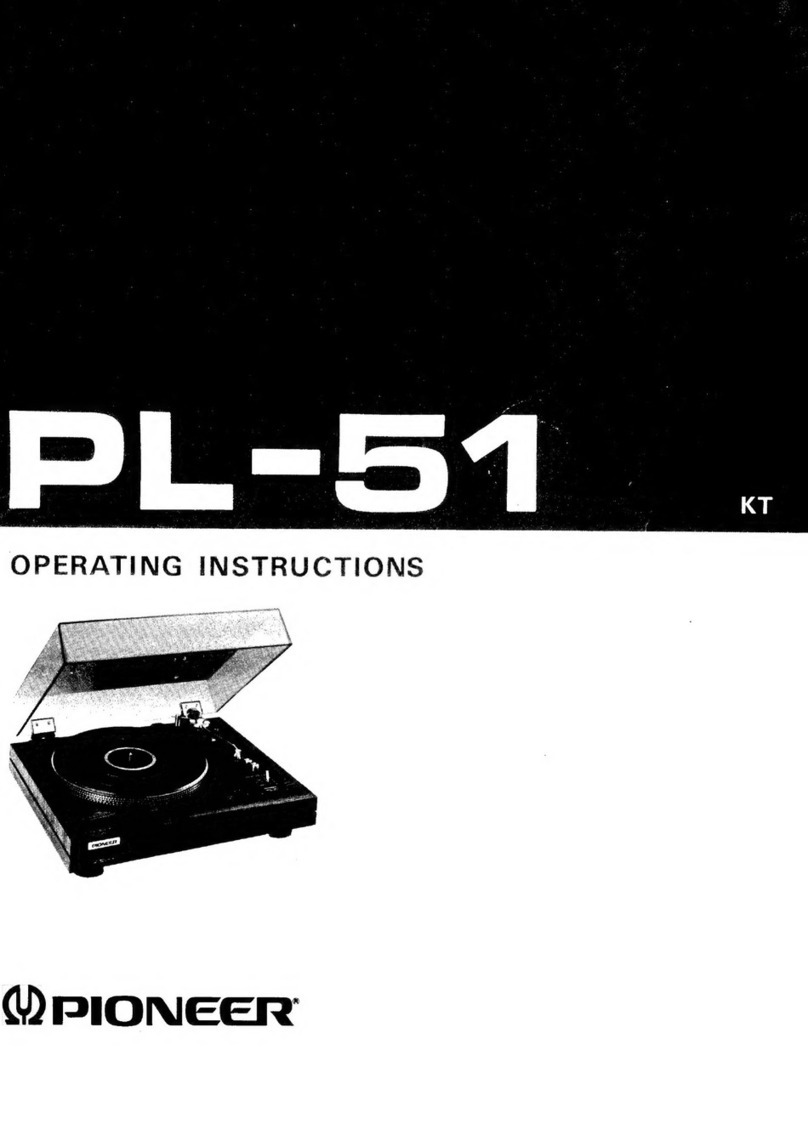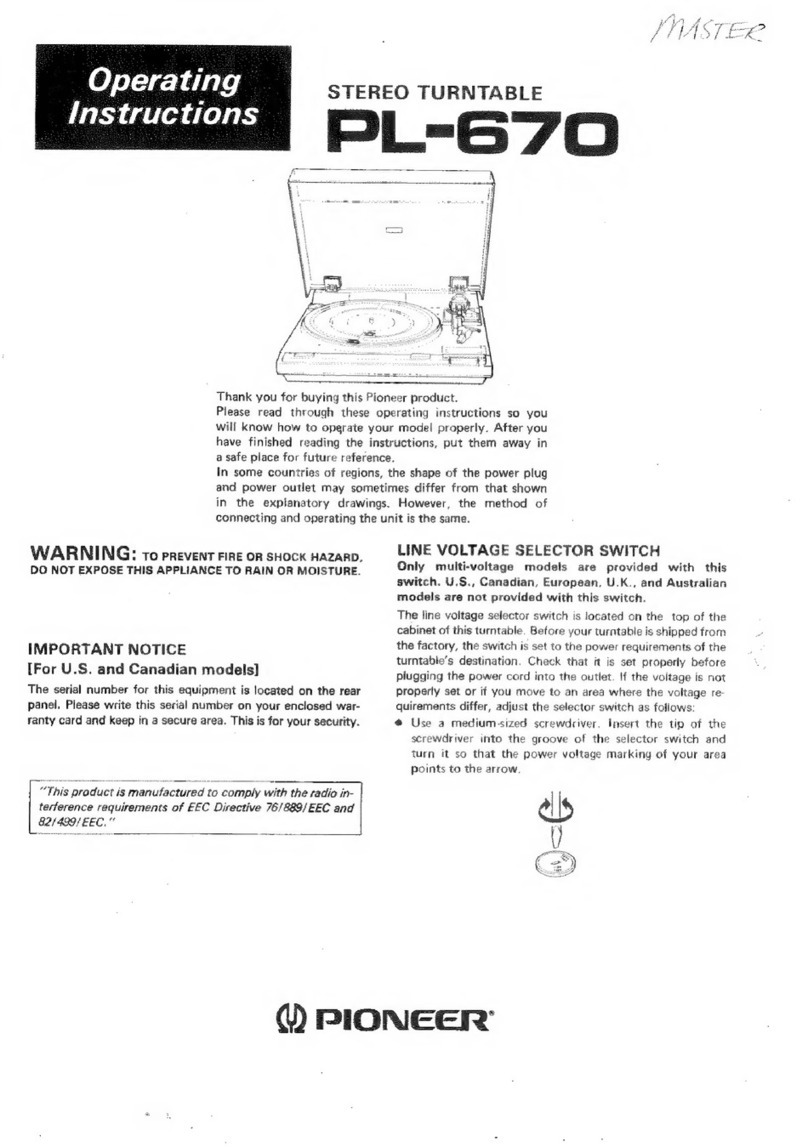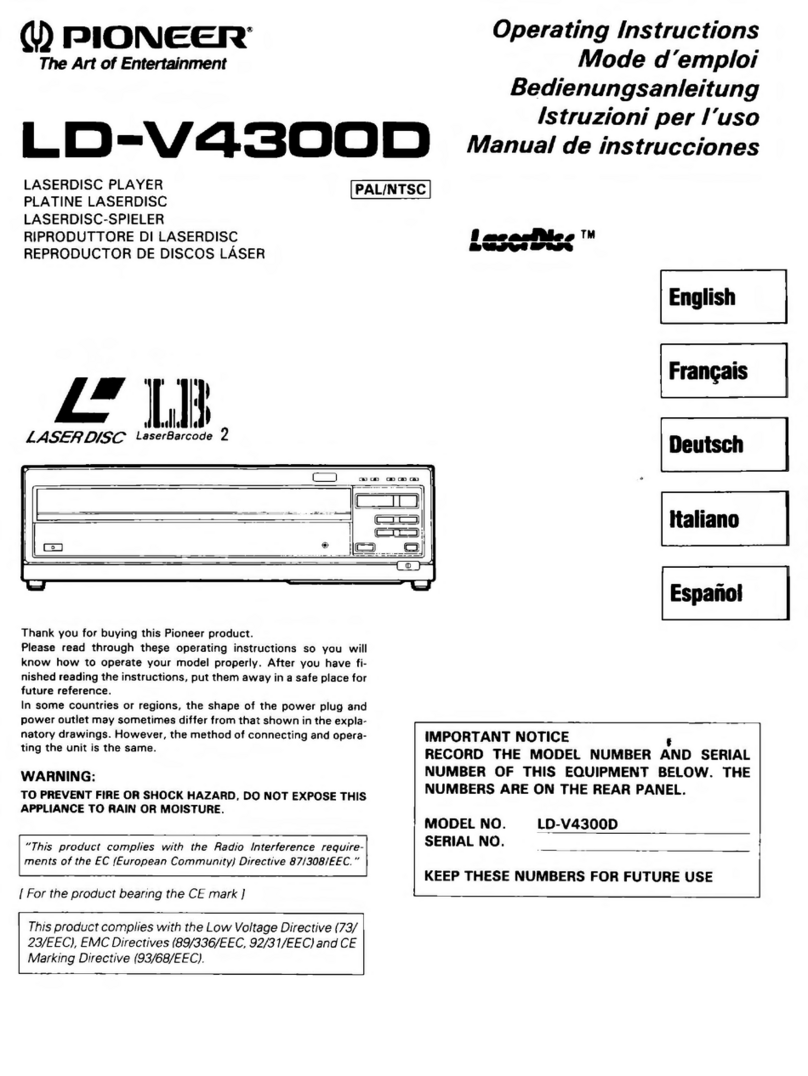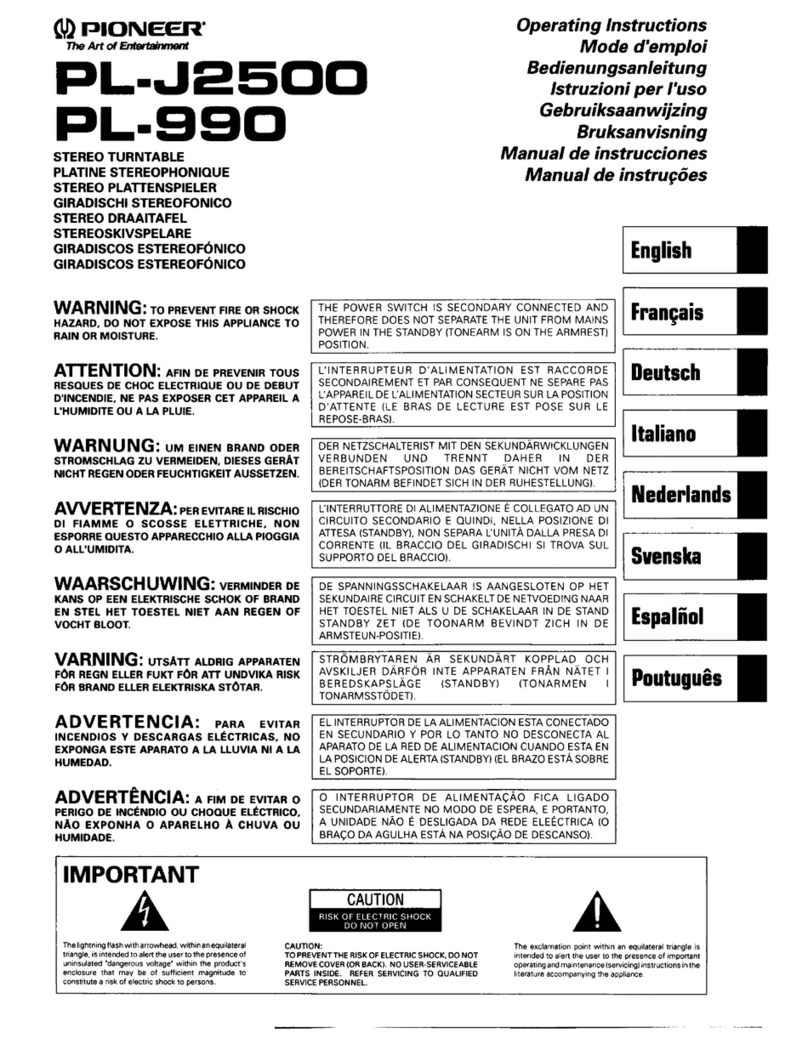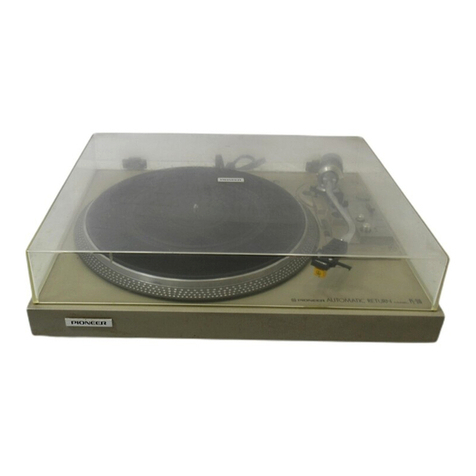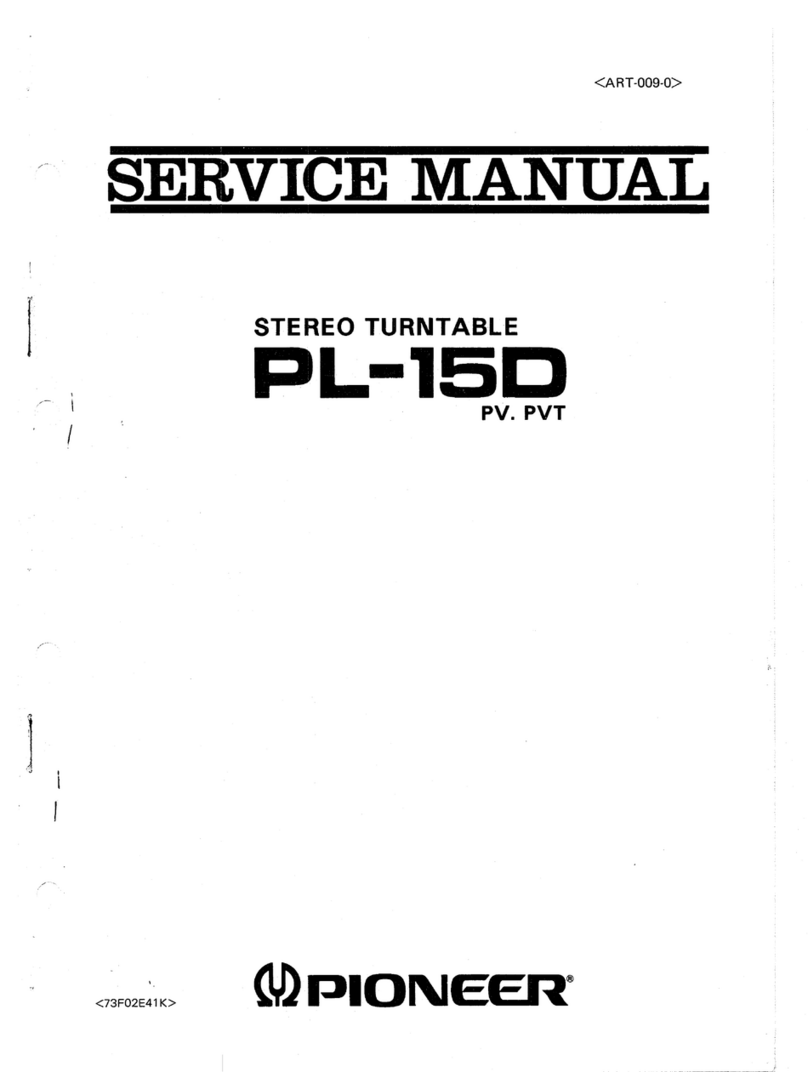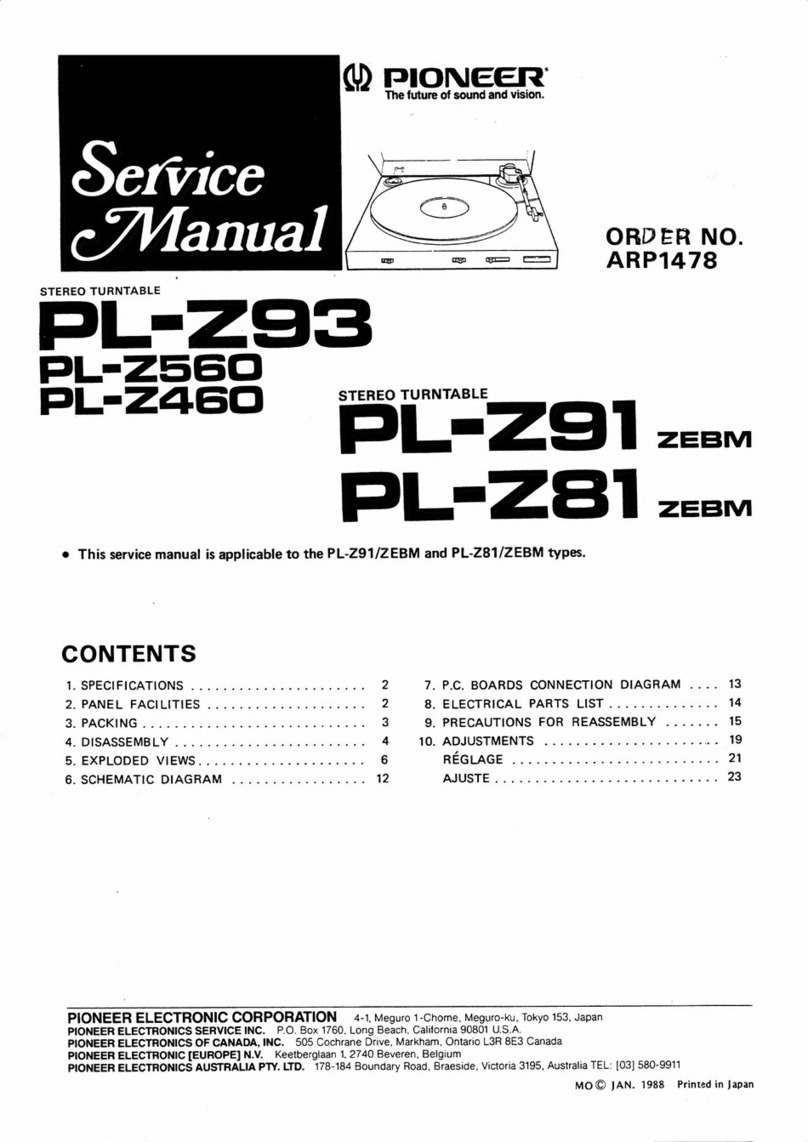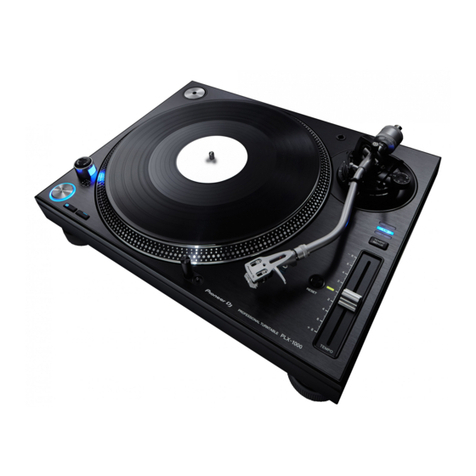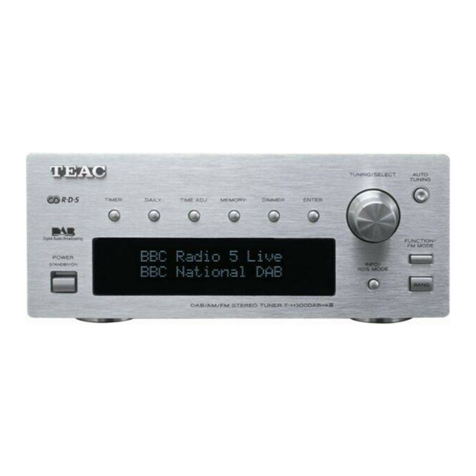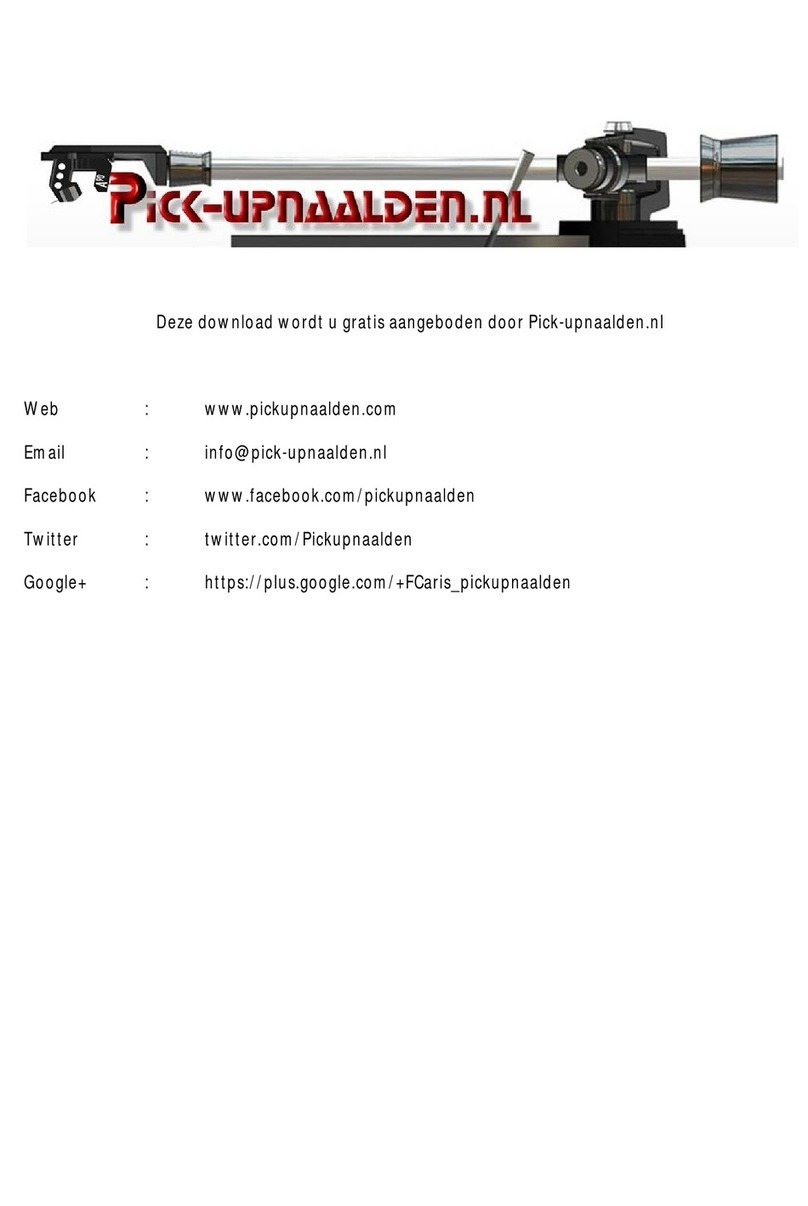
LINEAR
MOTOR ARM
STEREO TURNTABLE
OPERATING
INSTRUCTIONS
@PIONEER
"
HET
HBT
S/G
Thank
you for buying this Pioneer stereo turntabl
e.
Please read through these operating instructions and then
you
will know
how
to
operate
your
model propely. After
you
have finished reading the instructions,
put
them away
in a safe place for future reference.
These operating instructions are based
on
the
model HET,
and
th
ey c
an
be used for the HBT and 5/G models.
The
differences between the models are given below.
Power Requirements
HET, HBT models:
AC
220
/2
40V
"-(
switchable), 50, 60Hz
5/G model: AC110/120/220
/2
40V'\.(switchable), 50, 60Hz
NOTE:
R•ad
rhrough rho sscrion
on
rho
"LIN
E VOLTAGESELECTOR
SWITCH"
before
us
ing
your
rurnrablo
and
check thor rho
volt~>ge
wlec
tor
switch
is
sot
correctly
for
us11
in your
area.
Accesso
ri
es
HET, HBT models:
A cartridge is
not
provided with these models.However,
screws
for
mounting
the
cartridge. as well as washers
and nuts come wi
th
each model, and so before use,
provide yourself with the cartridge you intend
to
use.
read through the section "ATTACHING THE
CARTA lOGE" and then attach the cartridge
to
the ac·
cess
orv
headshell.
5/G
model:
This model comes with tho PC·6
00
cartridge (which is
a
tt
ached to
the
accessory headshell
).
Scr
ews
for m
ount
·
ing
a cartridge as we
ll
as washers and nuts are
not
pro·
vided.
IMPORTANT
----------------------------
--~
To
pr
ovent eloc
rr
ic
shock.
do
not romove cover. No user
servic~
DbltJ
pans
insldD,
r•
fer setvicing
ro
qunHfied
s1rvlce
personnel.
Alw1ys
di~t:onncct
all
tho
equipmt~nt
from
tht
m•
i
ns
supply
wMn
dlsconn«ring the
signal
leads.
Tht power cold should
be
conntJCttd
l•st. make sure thsr thllpowerswitch
is
off.
Unplug
tht
sec
from tho wall
wckot
whtn
It
is
not
to
b11
used for
on
oxt~ndod
ptrlod
of
time.
FOR
US
E IN UNITED KING
DOM
AND
AUSTRALIA
CAUTION 240V: Mains supply voltage
Is
factory
adjusted at 240V.
FO
R
USE
IN
UNIT
ED
KINGDOM
Tht
w
ir11s
;,
this mains lelld
11ro
coloured ln
«cordance
with
thD
following cord:
Blue:
N~utnl
Brown: Live
As
thl
colours
of
the wirts In thD mains lead
of
this apparatus
may not
corrBSPond
with tho colour
ed
marklng ldentllylng tho
UJrmlnols
in
yourplugproceed
os
loll
oW$
.
Tlr11
wire whlch
is
colouriJd blue must
})o
connoccod co tho
tOmJ/nol
wh
ich is morked wltll
th
olo
tr
er
No
r coloured
b
lt~
k.
The wire which is coloured brown must bl! connecced
10
th
u
rormlnal which
is
markedwith
lhl
/O
rt
llr
L
or
coloured
rtJd.

